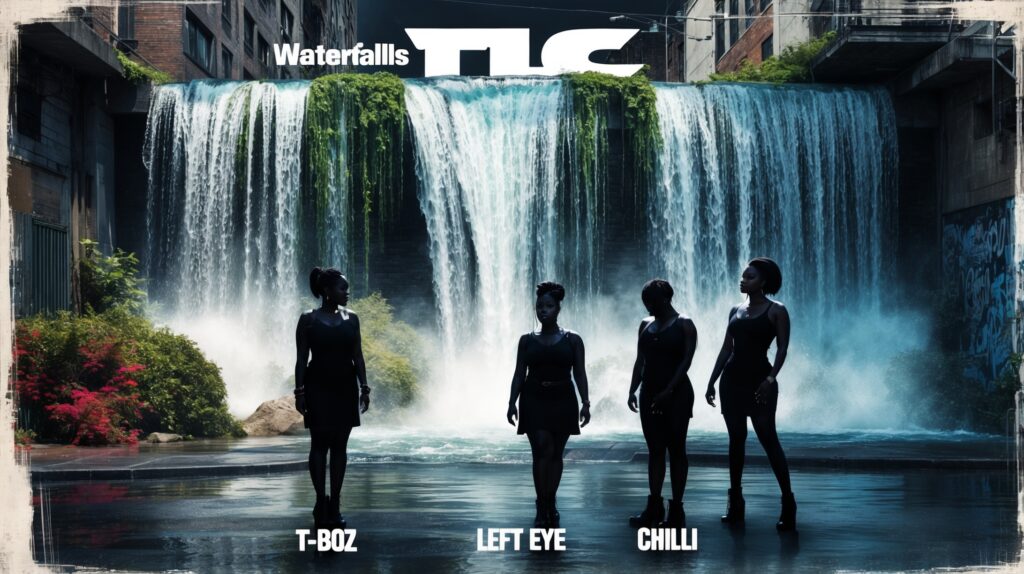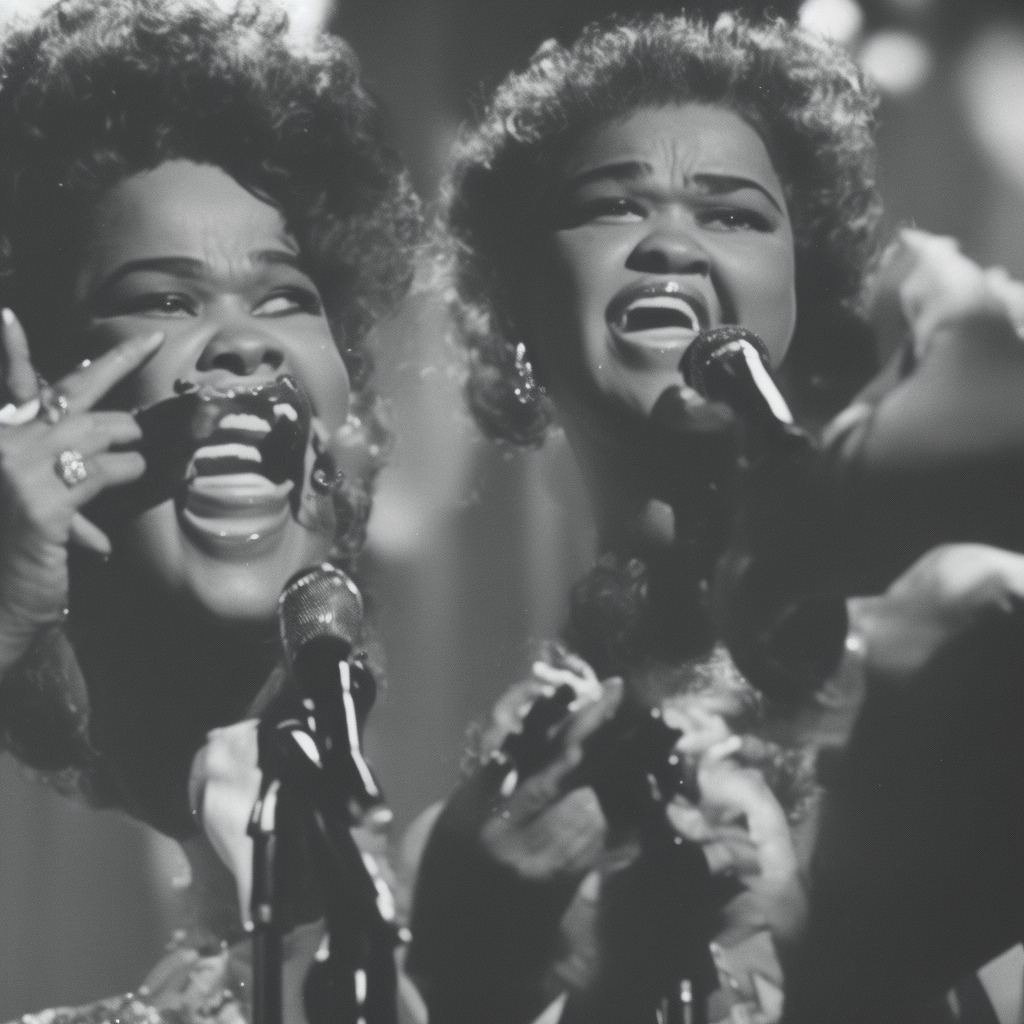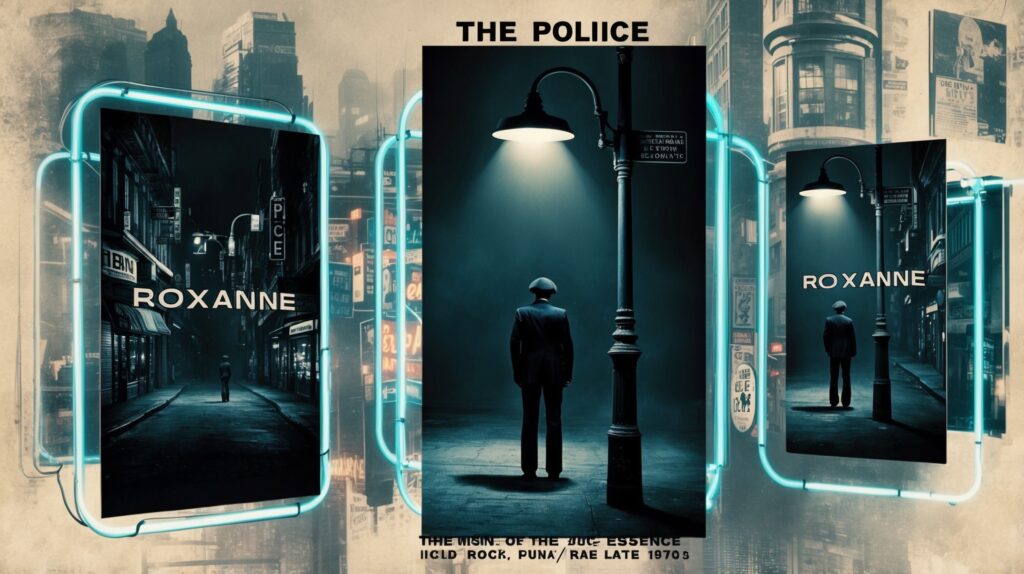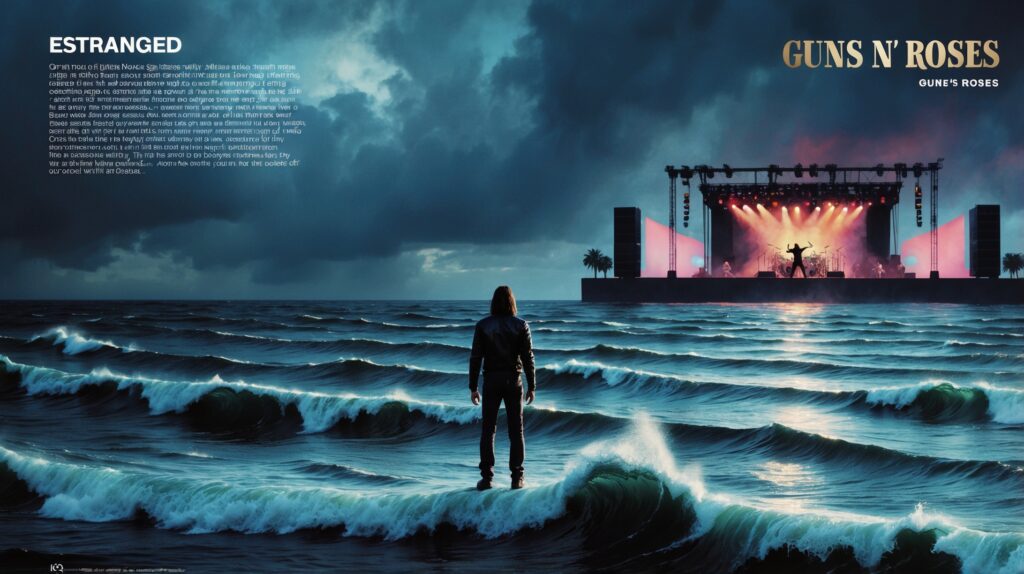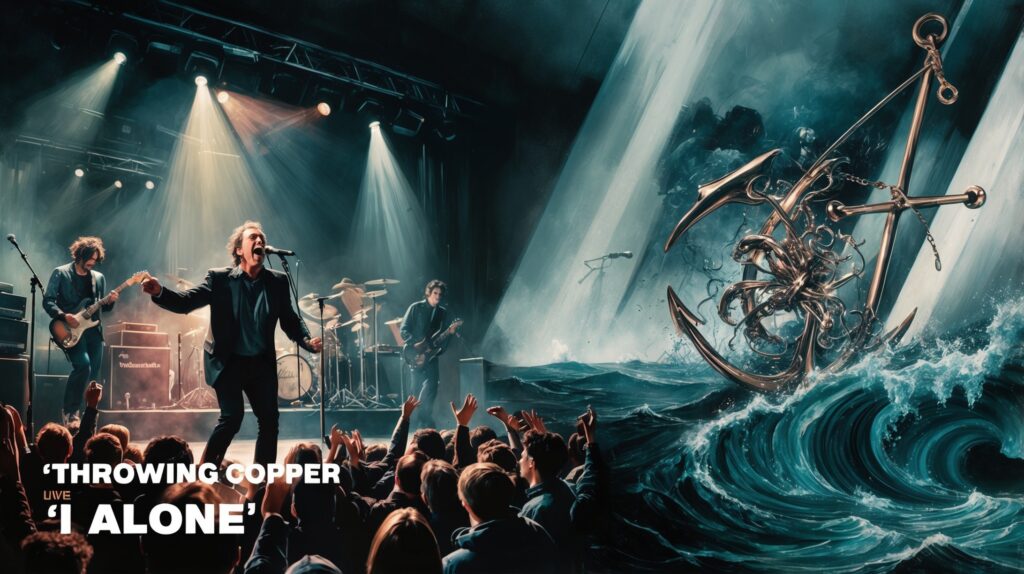TLC: Pioneers of R&B with a Bold Message
Discover how TLC, with members T-Boz, Left Eye, and Chilli, shaped the ’90s music scene with their bold blend of R&B and social commentary, solidified by their impactful hit “Waterfalls.”
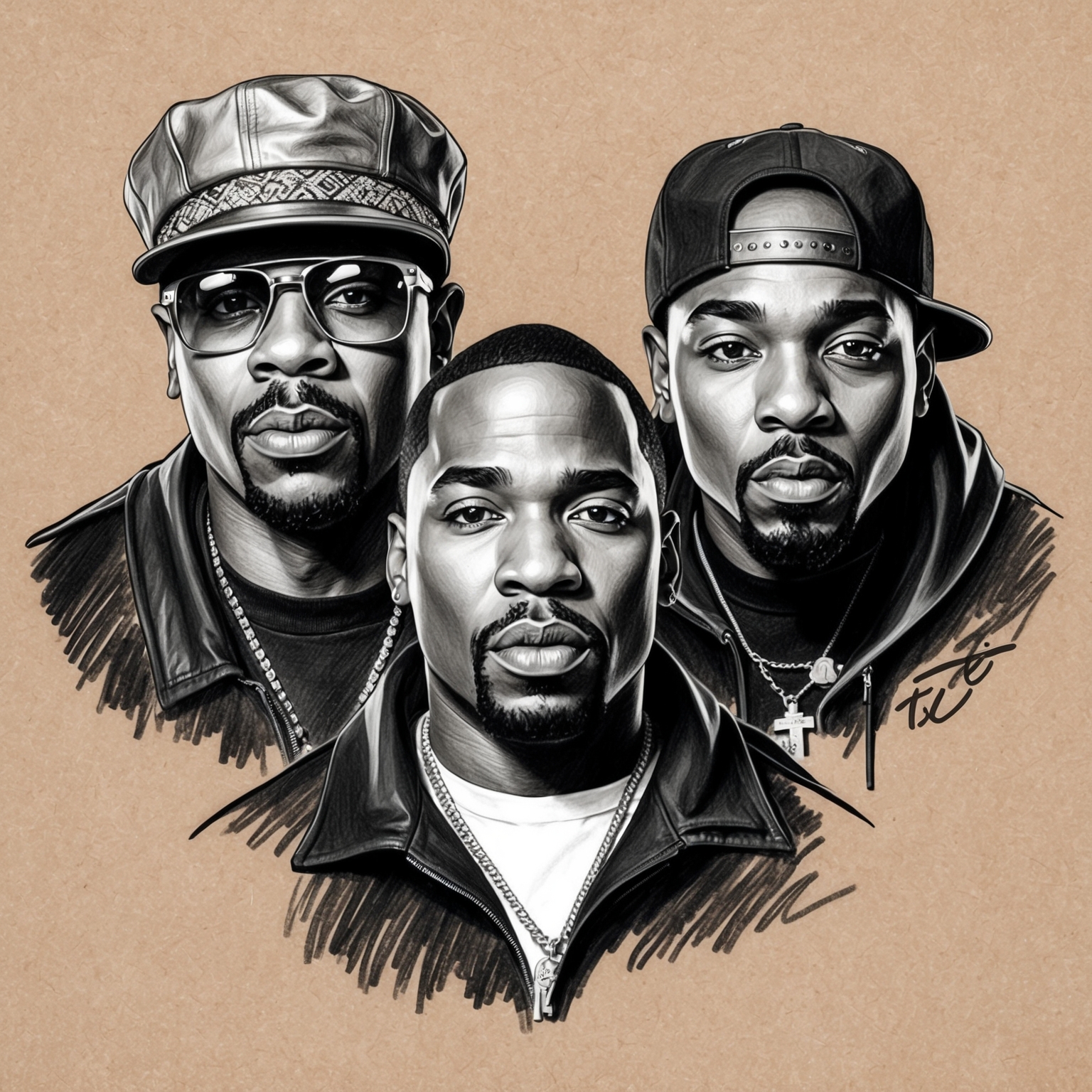
The sultry yet socially conscious trio, TLC, comprised of Tionne “T-Boz” Watkins, the late Lisa “Left Eye” Lopes, and Rozonda “Chilli” Thomas, carved a niche for themselves in the ’90s music scene with a blend of R&B, hip-hop, and soul. Their impact on the music industry is undeniably marked by their trailblazing hits that defy the norms and boldly address social issues. “Waterfalls,” in particular, stands as a testament to their unique ability to weave compelling narratives with unforgettable melodies.
Before becoming icons, each member of TLC had distinct beginnings that converged to form a powerful musical force. T-Boz and Left Eye initially met in the early ’90s, later joined by Chilli, forming the final lineup of the group. Signed by producer Dallas Austin to LaFace Records, TLC immediately captivated audiences with their eclectic sound and provocative style, dominating the airwaves with chart-topping hits that weren’t afraid to push boundaries.
Released in 1995, “Waterfalls” became not just another entry in their impressive discography but a defining moment in their careers. Emerging during an era when R&B was melding with hip-hop influences, TLC’s fearless approach to tackling controversial topics such as drug use and HIV/AIDS in their lyrics set them apart. The song garnered wide acclaim, drawing attention to critical social issues while showcasing their creative synergy and bold artistic vision.
Behind the Melodies: The Composer of ‘Waterfalls’
Explore the contribution of Marqueze Etheridge and Organized Noize, the masterminds behind TLC’s ‘Waterfalls,’ and discover how their composition elevated the song’s impact.

‘Waterfalls’ by TLC, a song that continues to resonate with listeners decades after its release, owes much of its brilliance to the composer behind its unforgettable melody. Marqueze Etheridge, alongside Organized Noize, played a crucial role in crafting the song’s unique sonic landscape. Their collaboration with TLC not only enhanced the group’s signature sound but also left a lasting impact on the music industry.
Marqueze Etheridge, a talented songwriter and composer, brought a wealth of experience and creativity to the table. With a background enriched by a love for rhythm and storytelling, Etheridge infused ‘Waterfalls’ with both captivating melodies and profound insights. His early career was marked by diverse musical explorations, allowing him to develop a versatile and dynamic style that effortlessly blended soul, R&B, and pop elements.
Organized Noize, the other key contributors to the composition, were renowned for their production prowess and unique sound. As a collective, their influence on ‘Waterfalls’ was substantial, providing the song with a lush and textured soundscape. Their ability to merge hip-hop with soulful undertones was pivotal in shaping the track’s appeal and securing its status as a timeless classic.
The interplay between Etheridge’s composition and Lisa ‘Left Eye’ Lopes’ poignant raps further enriched the song’s narrative depth. Etheridge expertly crafted a musical backdrop that seamlessly complemented TLC’s vocal harmony, ensuring that each lyrical moment was underscored by an equally powerful musical phrase.
This expert composition played a significant role in ‘Waterfalls’ success, as critics and audiences alike praised the seamless integration of its elements. The song’s fusion of melody, rhythm, and message remains a benchmark in the industry, exemplifying how collaboration among composers, lyricists, and performers can create timeless art.
Recognition and Resurgence: Accolades and Covers of TLC’s Iconic Hit
Waterfalls’ by TLC has received numerous accolades, including Grammy nominations. The song’s powerful message has inspired many covers by artists such as Bette Midler and Stooshe, highlighting its timeless appeal. Featured in films, TV shows, and video games, ‘Waterfalls’ endures as a cultural cornerstone.

TLC’s ‘Waterfalls’ is more than just a chart-topping track from the 1990s; it is a song that continues to resonate and inspire, earning numerous accolades throughout the years. When ‘Waterfalls’ was released in 1995, it quickly became one of TLC’s most celebrated songs. The song was nominated for two Grammy Awards in 1996: Record of the Year and Best Pop Performance by a Duo or Group with Vocal. These nominations cemented the track’s status not just as a commercial success but also as a critically acclaimed masterpiece, reflecting the song’s deep impact on both the industry and its audience.
In addition to its Grammy nominations, ‘Waterfalls’ won several awards and held prominent placements on music charts worldwide, including reaching the number one spot on the Billboard Hot 100. It is frequently included in ‘best of’ lists, celebrating its social impact and musical brilliance. VH1 ranked it fourth on their list of the ‘100 Greatest Songs of the 1990s,’ while Rolling Stone positioned it at 13 in their ‘The 50 Best Songs of the Nineties.’ Such distinctions have ensured that ‘Waterfalls’ maintains a perennial presence in the music landscape.
The song’s powerful message and memorable melody have inspired countless covers by artists across various genres, showcasing its timeless appeal. Notably, artists such as Bette Midler and the British group Stooshe have put their own spin on the song, each bringing unique interpretations that pay homage to the original. These covers serve as a testament to the song’s enduring significance, allowing new generations to discover and appreciate this classic hit.
Beyond the music charts and covers, ‘Waterfalls’ has also found its way into numerous films, TV shows, and video games, further embedding itself into pop culture. Whether playing in the background of a nostalgic 90s movie scene or included in a modern game soundtrack, the song’s presence in media showcases its cross-generational appeal. Its use in popular culture only accentuates its status as an anthem of both the past and present, continuing to evoke memories and emotions each time it is played.
Climbing to the Top: The Meteoric Rise of ‘Waterfalls’
Waterfalls’ by TLC climbed to the top of the charts, spending seven weeks at No.1 on the Billboard Hot 100, a feat that solidified its legacy as a defining track of the 1990s.
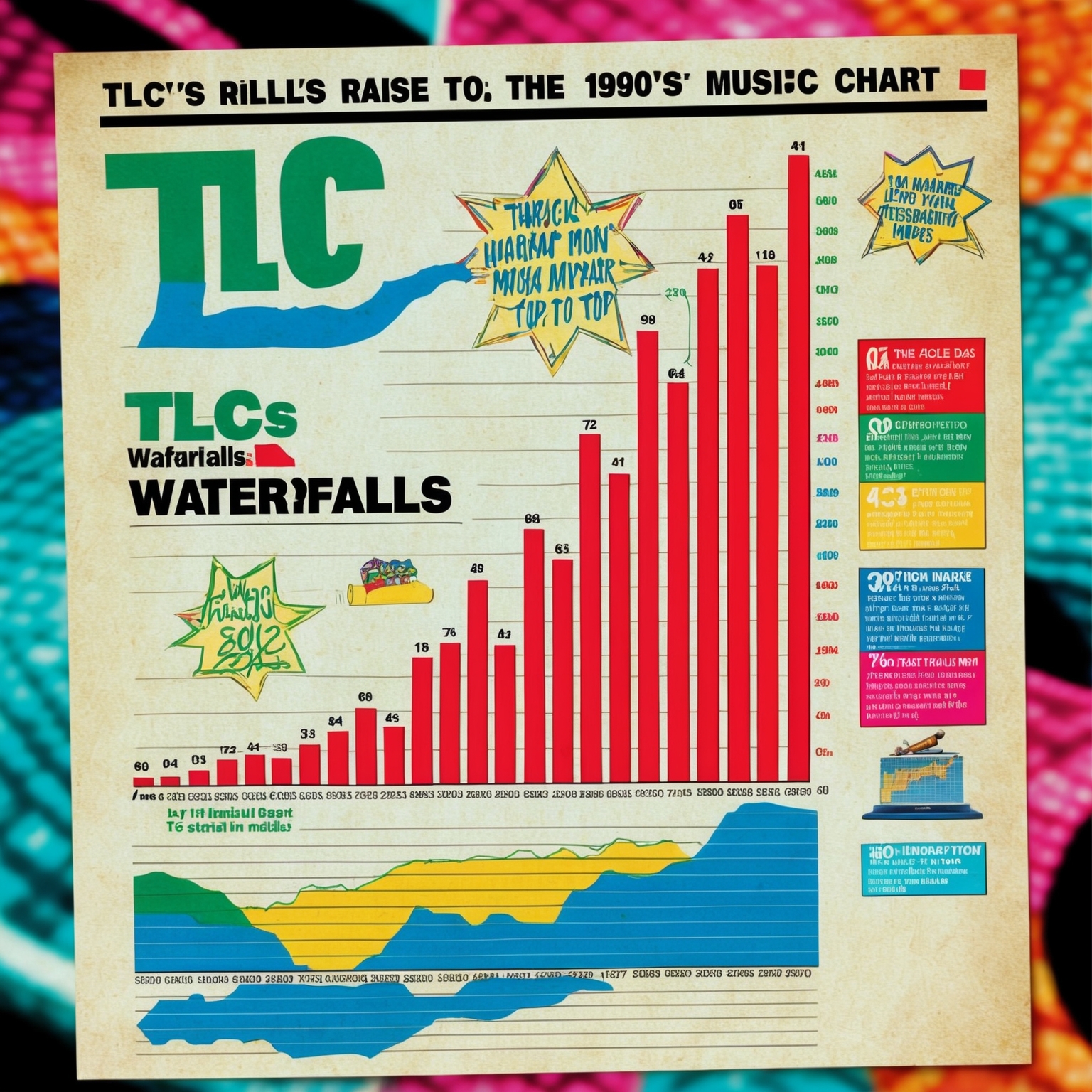
‘Waterfalls’ by TLC, released in May 1995, quickly became a defining track of the 1990s, both in terms of chart performance and cultural impact. The song debuted on the Billboard Hot 100 and steadily gained traction, showcasing TLC’s dominance in the R&B and pop genres. While its initial chart position was respectable, it is the song’s impressive climb to the top that truly stands out. ‘Waterfalls’ ultimately spent seven weeks at the peak position of the Billboard Hot 100, which was a testament to its wide appeal and enduring relevance.
Unlike many of its contemporaries, ‘Waterfalls’ distinguished itself by blending genres and addressing socially-conscious themes. This top-charting single followed on from TLC’s previous critical successes but solidified their status as one of the most impactful female groups of the decade. It set new benchmarks for contemporary R&B music, influencing the direction of the genre and resonating with audiences worldwide, thereby becoming a signature song in TLC’s illustrious career.
Beyond its chart performance, the song’s legacy lies in its multi-faceted promotion strategies and public reception. The accompanying music video, heavily played on MTV, bolstered the song’s popularity, enhancing its cultural footprint. Critics praised ‘Waterfalls’ for its innovative approach, both musically and visually, contributing to widespread acclaim. Public enthusiasm and critical recognition amplified its cultural impact, positioning ‘Waterfalls’ as more than just a commercial triumph but also an anthem reflective of its time.
Visual Masterpiece: The Iconic ‘Waterfalls’ Music Video
Discover the haunting yet beautiful music video for TLC’s ‘Waterfalls,’ directed by F. Gary Gray, as it blends storytelling with groundbreaking visuals to expand the song’s reach and impact.
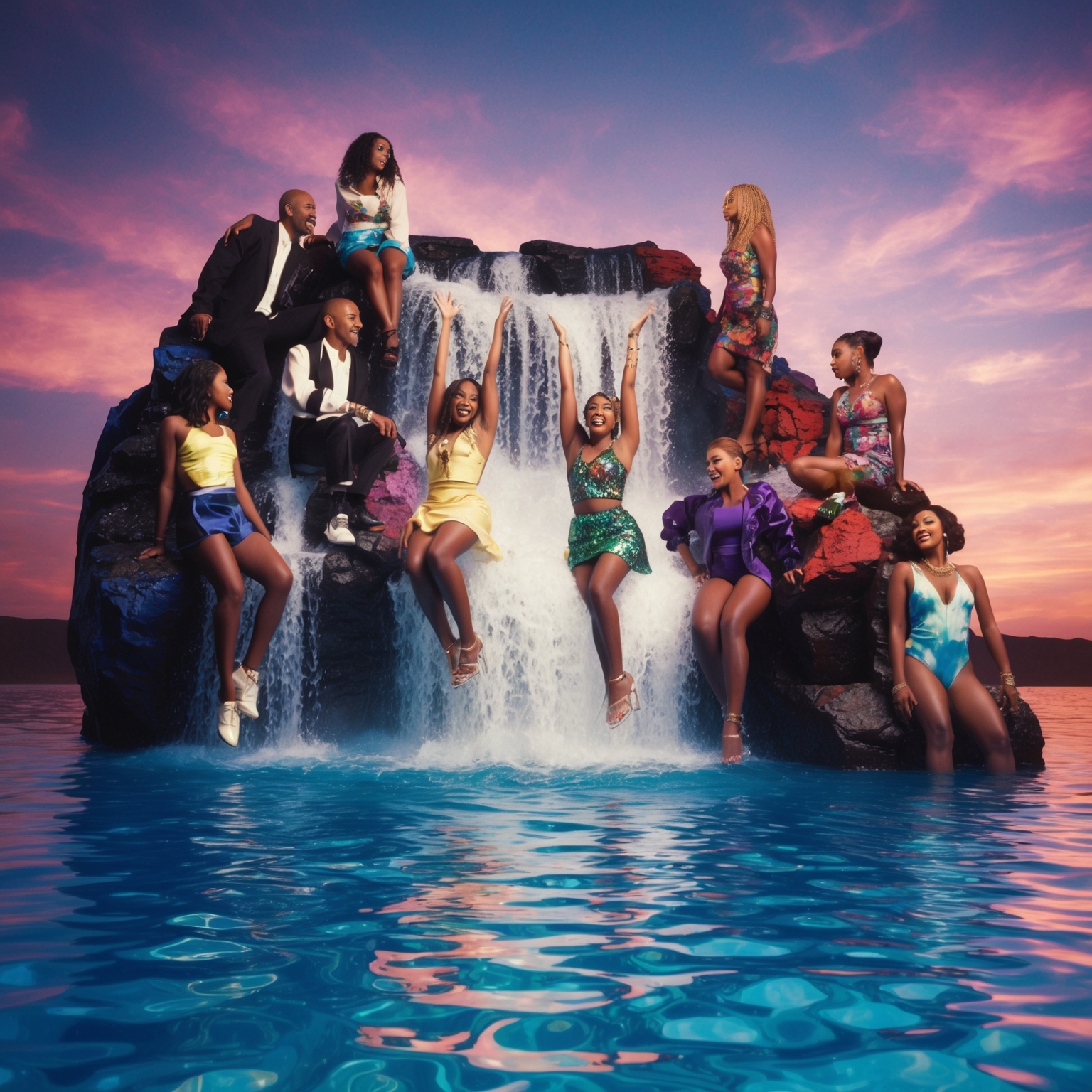
The music video for TLC’s ‘Waterfalls’ is not only a visual delight but also a powerful narrative tool that enhances the song’s complex themes. Directed by F. Gary Gray, who would later gain fame for his work on films like ‘Straight Outta Compton’ and ‘The Fate of the Furious,’ the video combines storytelling with stunning visual effects that were ahead of its time. The video depicts various challenging social issues such as drug addiction and HIV/AIDS, paralleling the lyrical content of the song. By using vivid storytelling and emotional imagery, the video amplifies the song’s message about the dangers of chasing elusive dreams at the cost of one’s well-being.
The visual narrative of ‘Waterfalls’ played a crucial role in the song’s enduring popularity. The haunting images of a young man falling victim to the consequences of risky behavior and a mother losing her son to drug-related violence are seared into the viewer’s mind. These powerful scenes, juxtaposed with shots of the group singing against CGI-generated water imagery, were groundbreaking for the time. This fusion of storytelling, impactful social messages, and innovative technology made the music video a cultural phenomenon, reinforcing the song’s global reach.
Critically acclaimed for its artistic ambition and emotional depth, the video received several accolades, including four MTV Video Music Awards in 1995, such as Best Video of the Year and Best R&B Video. The video’s director, F. Gary Gray, along with TLC’s commitment to authenticity and social commentary, crafted a visual masterpiece that remains significant even today. Beyond technical achievements, the music video also sparked conversations around the featured social issues, proving its importance not just as an entertainment piece but as a meaningful cultural artifact.
Unraveling the Musical Layers of ‘Waterfalls’
Explore the intricate musical structure of TLC’s ‘Waterfalls’ by delving into its key, chord progression, harmonious melodies, rhythmic patterns, and instrumentation that contribute to its iconic sound, as well as its place in the artist’s evolving discography.
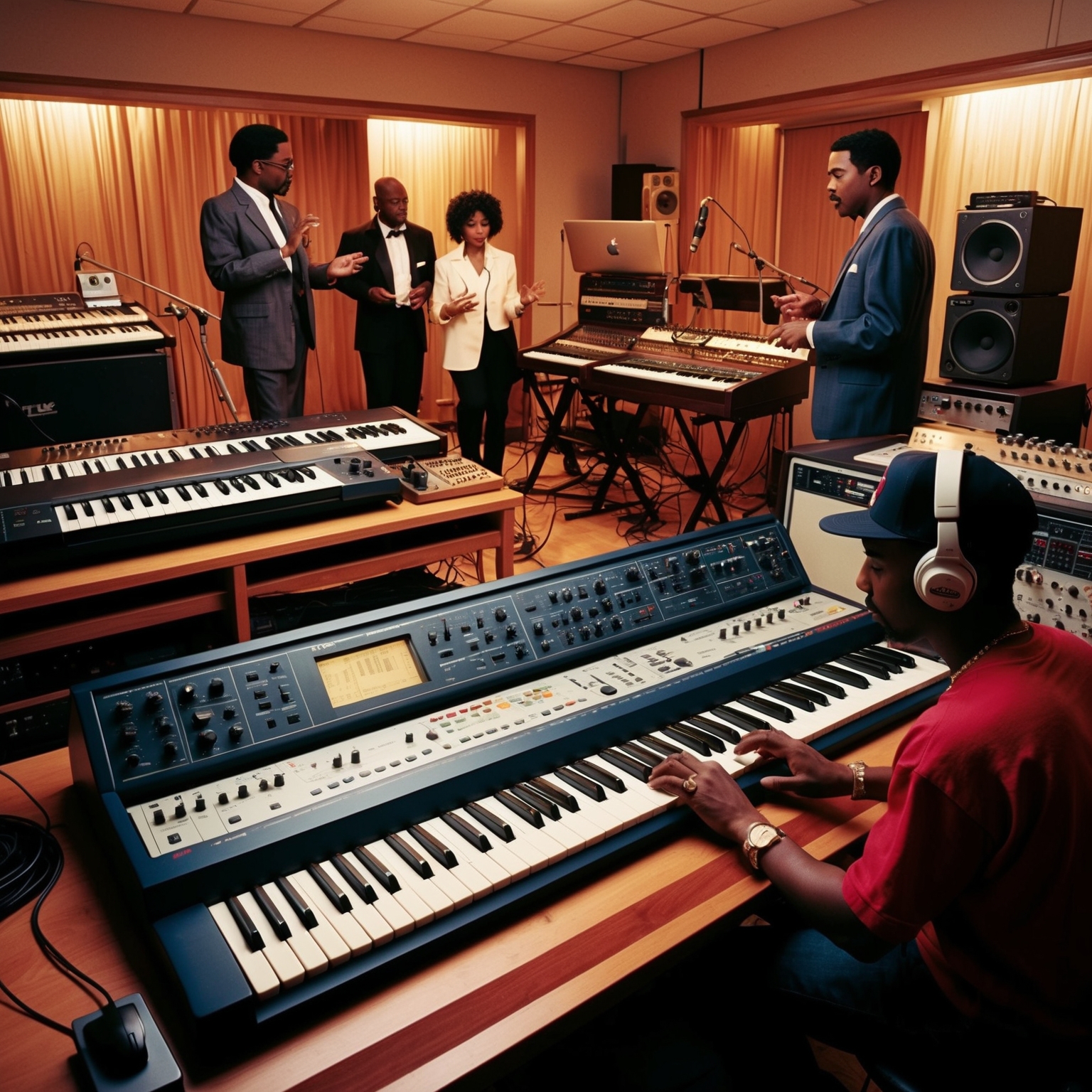
The song ‘Waterfalls’ by TLC is a compelling mixture of R&B, hip hop, and soul, which together create a sound that is as relevant today as it was when the track was first released. Written in the key of E-flat minor, the song predominantly uses chords that provide it a soulful and contemplative tone. The chord progression, which moves smoothly between E-flat minor, G-flat major, and A-flat major, supports a tempo that rests comfortably at around 84 beats per minute (BPM), delivering a somewhat laid-back yet serious undertone that fits the song’s thematic elements.
Dominated by the familiar smooth vocal harmonies of TLC members Tionne ‘T-Boz’ Watkins, Lisa ‘Left Eye’ Lopes, and Rozonda ‘Chilli’ Thomas, the song cleverly weaves melody with harmony. T-Boz’s low alto voice gives the verses an almost conversational feel, which works seamlessly with the song’s structure and rhythmic patterns. The harmonious chorus brings all the members together, offering a rich, soulful sound, emphasizing the poignant lyrical themes.
The instrumentation in ‘Waterfalls’ is another vital component of its charm. The song employs a combination of traditional band instruments like keyboards and drum machines, alongside strings and a subtle use of synthesizers. These elements were brought together by the legendary producer Dallas Austin and co-writer/producer Organized Noize, who are known for their work with Outkast and Goodie Mob. Their input provided a polished yet organic feel to the track. Comparatively, ‘Waterfalls’ represents a matured sound of TLC, globally recognized for its unique message and production quality, differentiating it from previous hits such as ‘Creep’ and ‘Ain’t 2 Proud 2 Beg.’ The song stands as a testament to the band’s evolution both musically and lyrically, indicating a period of deep thematic exploration in their artistic journey.
Unraveling the Depths: Analyzing the Lyrics of ‘Waterfalls’
Explore the layers of meaning and vivid storytelling within TLC’s ‘Waterfalls’, a song rich with social commentary and emotional depth. Discover the themes, narrative style, and literary devices that make the lyrics resonate across generations.
Staring at a son that she just can’t touch
If at any time he’s in a jam, she’ll be by his side
But he doesn’t realize he hurts her so much
But all the praying just ain’t helping at all
‘Cause he can’t seem to keep his self out of trouble
So, he goes out, and he makes his money the best way he know how
Another body laying cold in the gutter
Listen to me
Don’t go chasing waterfalls
Please stick to the rivers and the lakes that you’re used to
I know that you’re gonna have it your way or nothing at all
But I think you’re moving too fast
Little precious has a natural obsession
For temptation, but he just can’t see
She give him loving that his body can’t handle
But all he can say is, “Baby, it’s good to me”
One day he goes and takes a glimpse in the mirror
But he doesn’t recognize his own face
His health is fading and he doesn’t know why
Three letters took him to his final resting place
…
******* This Lyrics is NOT for Commercial use *******
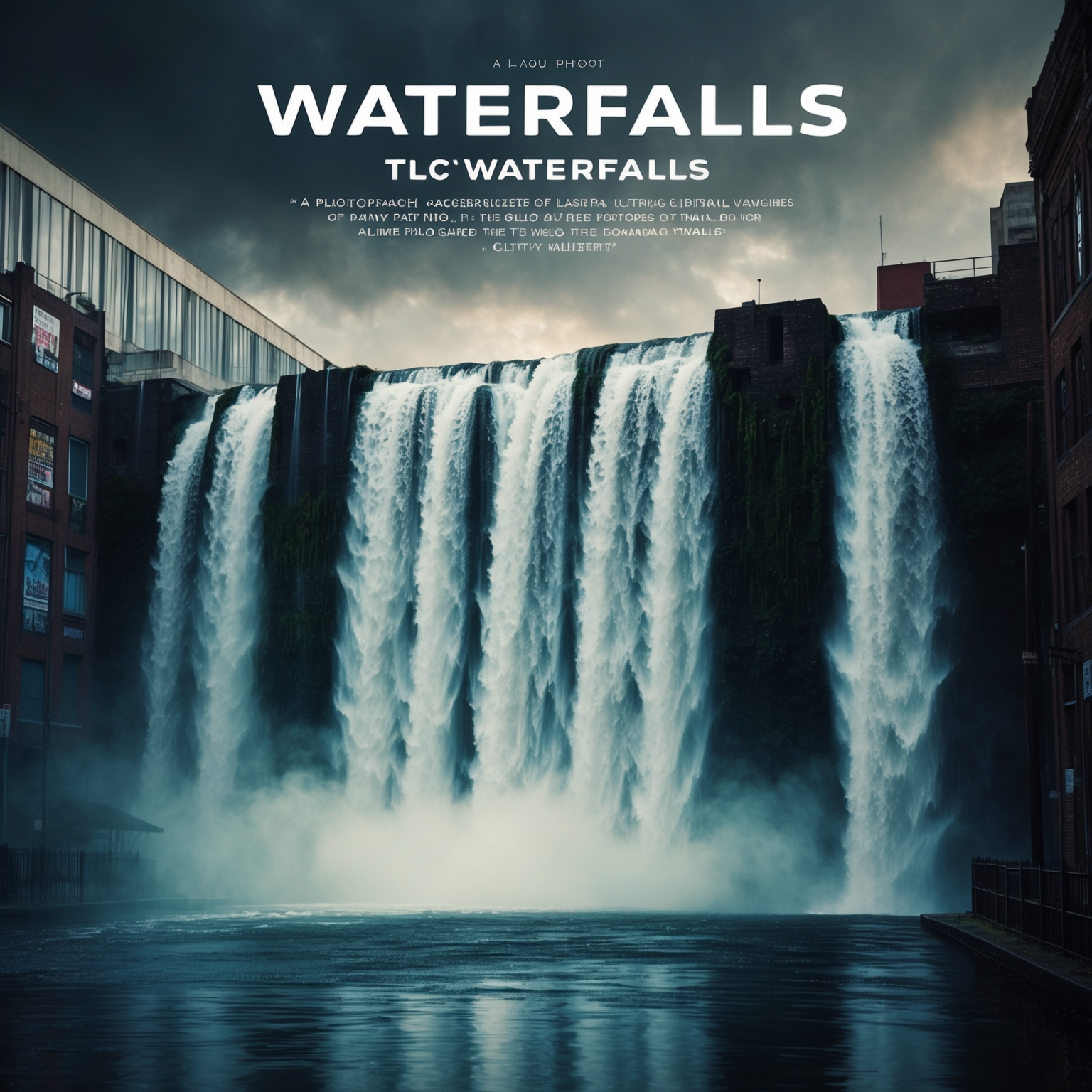 At its core, TLC’s ‘Waterfalls’ delivers a poignant mix of social commentary and personal storytelling, crafted through evocative and emotive lyrics. The song masterfully interweaves multiple themes, including the struggles of temptation, the dangers of living on the edge, and the familial bonds tested by life’s hard realities. The opening verse sets the tone by introducing a mother painfully watching her son fall prey to a life of crime. This narrative speaks volumes about inner-city struggles and universal parental concerns, resonating deeply with listeners from various backgrounds.
At its core, TLC’s ‘Waterfalls’ delivers a poignant mix of social commentary and personal storytelling, crafted through evocative and emotive lyrics. The song masterfully interweaves multiple themes, including the struggles of temptation, the dangers of living on the edge, and the familial bonds tested by life’s hard realities. The opening verse sets the tone by introducing a mother painfully watching her son fall prey to a life of crime. This narrative speaks volumes about inner-city struggles and universal parental concerns, resonating deeply with listeners from various backgrounds.
The lyrics continue to explore these themes with vivid storytelling. Using a third-person perspective, they paint a broader picture, weaving stories of individuals torn apart by life choices and circumstances beyond their control. The refrain—’Don’t go chasing waterfalls, please stick to the rivers and the lakes that you’re used to’—serves as a metaphorical caution against chasing illusions or engaging in risky behaviors without regard for consequences. This metaphor, wrapped in simplicity, beautifully encapsulates the moral of the story, urging listeners to seek stability and wisdom.
Literary devices further enhance the song, such as metaphors and symbolism—’waterfalls’ representing risky pursuits and unattainable dreams. These elements, coupled with the song’s smooth rhyme schemes and rhythmic flow, elevate its poetic quality. Moreover, the lyrical style and themes align with the social consciousness that defined much of 1990s music, thus reinforcing the song’s relevance both at the time of its release and in today’s world.
? Did you know TLC’s Waterfalls was the first #R&B song by a girl group to hit #1 on the Billboard Hot 100 for 7 weeks? ?✨ #TLC #90sVibes #MusicTrivia tinyurl.com/335suwpf
Click to Tweet

